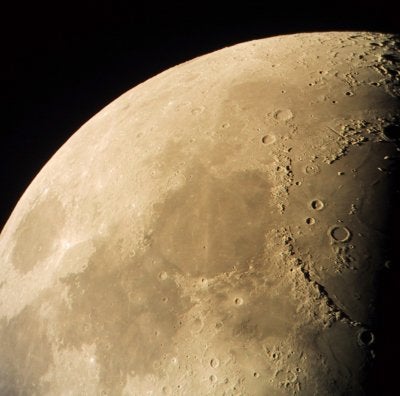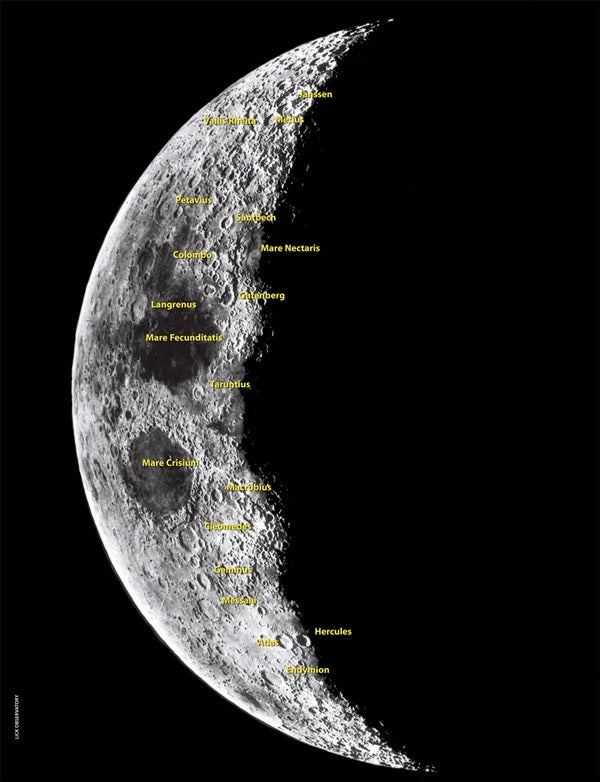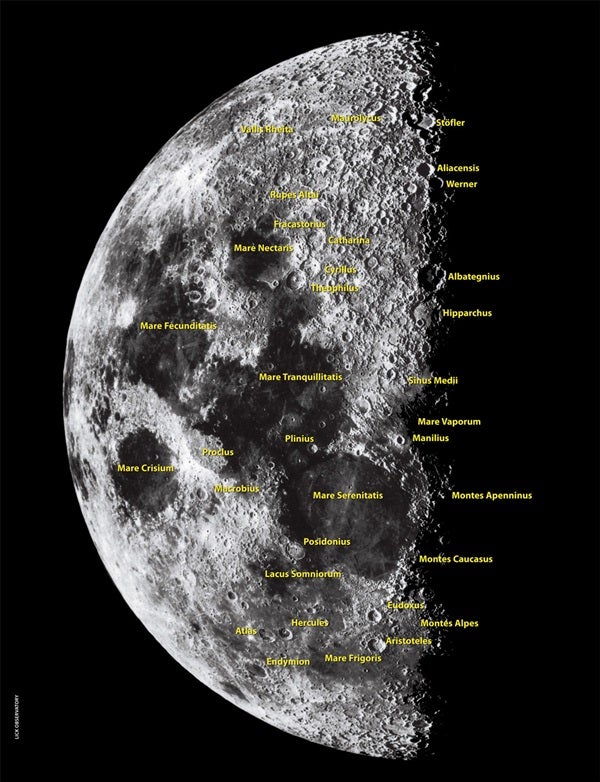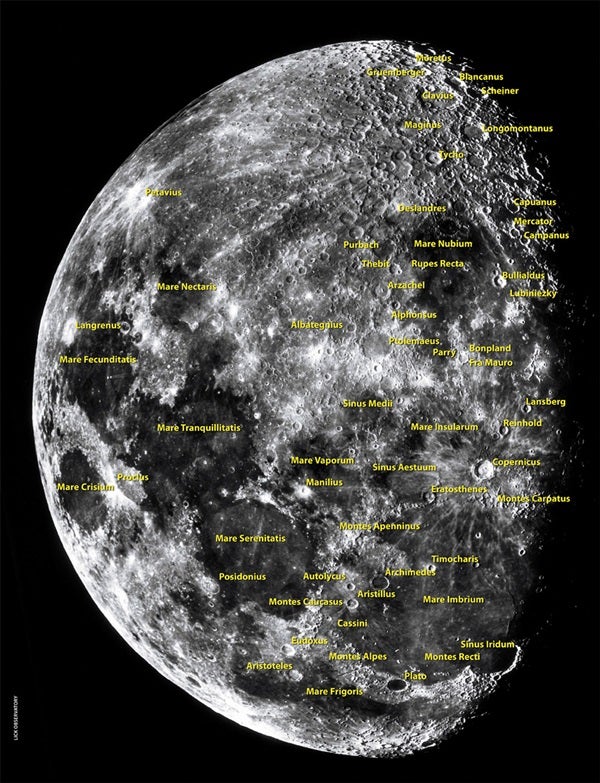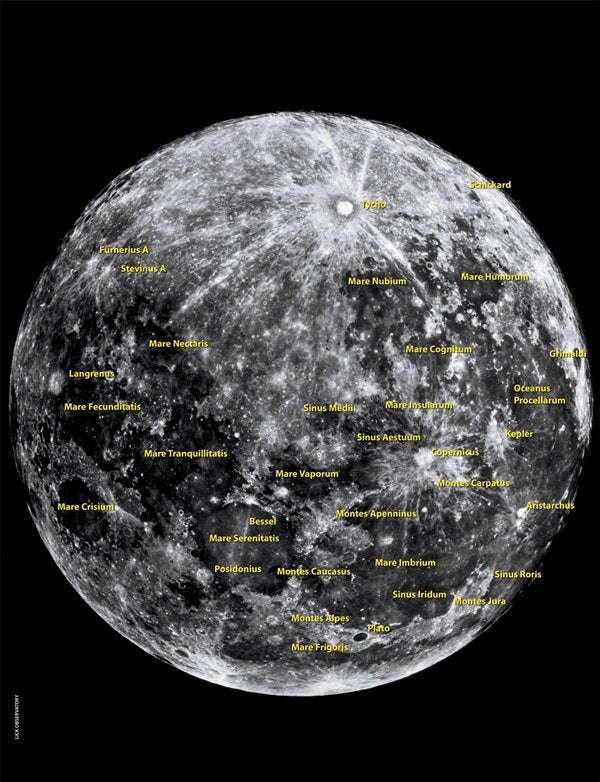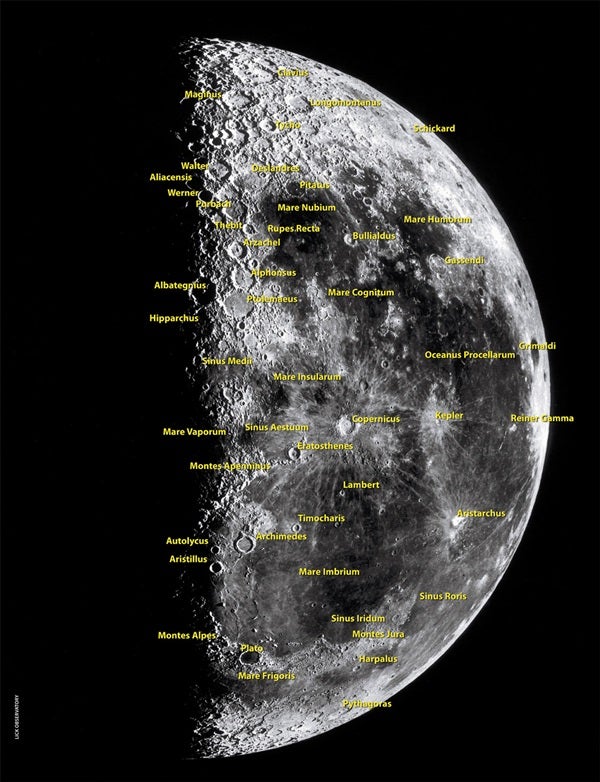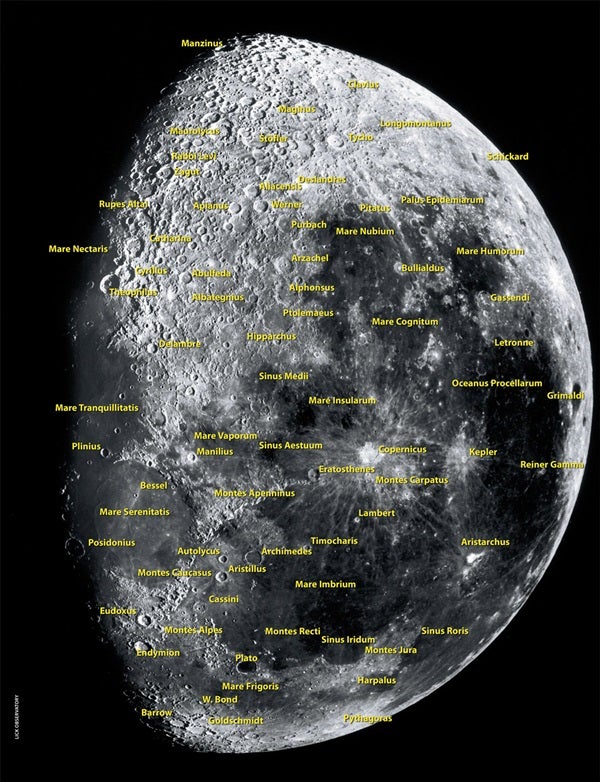For the February 2010 issue of Astronomy, I wrote a story entitled “10 tips for Moon watchers.” Because it was only a 2-page feature, we didn’t have room to reproduce labeled Moon maps. We have no such space limitation on Astronomy.com., so here are half a dozen maps to help you Moon watch. In each map, south is up to match the view in a telescope, and east lies to the left.
Crescent Moon
The first map, “Crescent Moon,” shows Earth’s nearest celestial neighbor 4 days after New Moon, the point at which the Moon lies between Earth and the Sun and, therefore, is invisible to our view.
The first map, “Crescent Moon,” shows Earth’s nearest celestial neighbor 4 days after New Moon, the point at which the Moon lies between Earth and the Sun and, therefore, is invisible to our view.
First Quarter Moon and Waxing Gibbous Moon
“First Quarter Moon” displays features you can see 7 days after New Moon, and “The Waxing Gibbous Moon” is set for 9 days after New Moon.
“First Quarter Moon” displays features you can see 7 days after New Moon, and “The Waxing Gibbous Moon” is set for 9 days after New Moon.
Full Moon
The fourth map, “The Full Moon” shows the entire Moon’s face 14 days after New Moon. This is the phase when details are at their minimum because, from the Moon’s perspective, the Sun is directly overhead and shadows are shortest.
The fourth map, “The Full Moon” shows the entire Moon’s face 14 days after New Moon. This is the phase when details are at their minimum because, from the Moon’s perspective, the Sun is directly overhead and shadows are shortest.
Waning Gibbous Moon and Last Quarter Moon
The last two maps are “The Waning Gibbous Moon” and “Last Quarter Moon.” They show our satellite roughly 20 and 22 days after New Moon.
The last two maps are “The Waning Gibbous Moon” and “Last Quarter Moon.” They show our satellite roughly 20 and 22 days after New Moon.
Before, or even as, you observe the Moon, review the 10 observing tips I listed in the February issue. Take your time, and by all means have fun.

